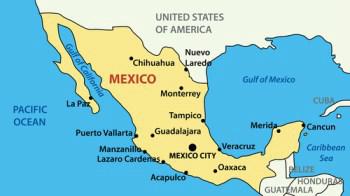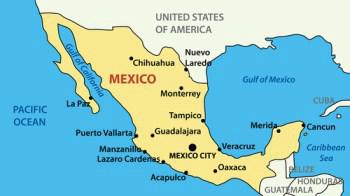Origin Of Chihuahua
Origin and History of the Chihuahua
Proof of Origin
Did you ever wonder where the smallest dog breed in the world came from? Here we will discuss the interesting history of the Chihuahua breed.
The Chihuahua is named for the Mexican state of ‘Chihuahua’ that borders Texas, Arizona and New Mexico in the USA. Though it has long been theorized that the Chihuahua’s ancestors were from Chihuahua (the Mexican state), this has been confirmed by DNA analysis.


Any online sources or books that debate a Mexican origin for the Chihuahua are offering out-of-date information.
In 2013, the KTH Royal Institute of Technology in Stockholm, Sweden released their findings regarding the ancestry of certain dog breeds. They compared mitochondrial DNA from Asian and European dogs, ancient archaeological samples from the Americas and certain American dog breeds.
Among the breeds that they tested was the Chihuahua, since its origins have long been debated.
Any online sources or books that debate a Mexican origin for the Chihuahua are offering out-of-date information.
In 2013, the KTH Royal Institute of Technology in Stockholm, Sweden released their findings regarding the ancestry of certain dog breeds. They compared mitochondrial DNA from Asian and European dogs, ancient archaeological samples from the Americas and certain American dog breeds.
Among the breeds that they tested was the Chihuahua, since its origins have long been debated.
They proved that the Chihuahua does share a DNA type unique to the Mexican pre-Columbian samples, thus cementing the breed’s origins to be connected to the Techichi, a small desert canine that dates back to Mayan times.
We can see the Techichi dog via clay sculptures created by the Mayan Indians of South America dated to 500 BC. The Techichi resembled today’s Chihuahua. It is thought that the ancient Techichi were larger than today’s Chihuahua, ranging between 10 and 20 pounds.
The Toltecs civilization conquered the Mayans by 1100 AD and are thought to be the first people to fully domesticate the Techichi. The Toltecs may have been responsible for further development of the breed by crossbreeding the Techichi with a dog breed that populated the mountains of Chihuahua, called the Perro Chihuahueno.
It is said that the Perro Chihuahueno was a foraging type of dog, that created dens by digging holes in the ground. They had long nails and short, erect ears. What is really interesting, is that drawings and carvings show both the apple head and the deer head
shape.
After the Aztec people became the ruling class of Mexico, they brought the Techichi into their own culture. The Techichi was a companion and was also used in religious ceremonies.
This is documented via carvings found in Aztec temples and pyramids. Interestingly, skeletal remains of the dog were found both in pyramids and at gravesites. For this reason, it is thought that the Aztec people believed that the dog would play a role as a guide into the afterlife for the human soul.
Though both affluent Aztec and clergy considered the dog to be scacred, there is a theory that the poor, lower class did not agree. In fact, some say that the lower class may have used the dog as a food source.
When explorers arrived in the New World it is believed the Techichi was bred with a dog that was brought over and the end result is the Chihuahua that we have today. It is still up for debate as to which breed that was.
The introduction of other breeds may explain the many colors that can be found with this breed. Ancient drawings and carvings showed fawn colored dogs.
The Chihuahua of today can be found in many combinations of colors including red, silver, black, chocolate and white. There are patterns of fur that included sable (black tipped hairs) and brindle (a striping pattern of fur). This leads one to believe that color genes must have been introduced via a breed that held the genetics for those possible colors and patterns.
There is a myth that when Christopher Columbus saw a Chihuahua for the first time that he thought the dog was mute. This is not true. Stories often become exaggerated with time.
As you will find in our facts section, is that he did come across the dog, and since the one he encountered was extremely shy and quiet, he made a note of the dog's behavior in his journal...And that simply, over time, changed into the more dramatic "mute" version of the story.
This breed, while originating in Mexico soon became popular in the States due the sale of puppies to tourist close to the border. Records show that an American judge bought a Chihuahua from El Paso Texas and later, another from Tucson Arizona.
The Chihuahua in Current Times
The first Chihuahua to be officially registered in the United States was a dog called Midget that entered the AKC stud book in 1904 along with 3 others. Thirty Chihuahuas were registered in the United States by 1913. 25,000 were registered by 1972. In 2012, there are over 40,000 registered with the American Kennel Club - over 1000 each year are added - and this of course does not include those that are listed with the CKC, other kennels and those that are not registered at all.
The breed's popularity soared to an all time high in 1997 when a Chihuahua named Gidget (a female dog) played the role of Taco Bell's mascot. She famously called out (via a human male's voice-over) "Yo quiero Taco Bell!” which means “I want Taco Bell!”.
This breed is also popular in the UK. The most recently released statistics show that the Chihuahua was the 3rd and 4th most registered toy dog, with the longcoat (3rd) being slightly more popular than the short coat (4th). It is also very popular throughout Canada, Europe, Australia and the Philippines.
The Chihuahua is credited - by some- with the development of the Russkiy Toy dog. This is mainly based on the dog having both a short and long coat. The Russkiy was bred in isolation in Russia, so very little is know about its history.
What Lies Ahead
All canine breeds change over time. And as they emerge, some are eventually accepted into the AKC.
Almost every year, new breeds are being recognized. These dogs did exist for some time before; however, they were still be developed and perfected.
The standard (weight, height, coat color, etc) was still being scrutinized and written meticulously. At a certain time, it would become overwhelmingly clear that the dog was not a just a different type or variation of another.
Developmental breeding was on-going and being carefully checked to ensure the standard was being followed. In the end, the breed deserved to be recognized.


9 new breeds include:
- Bergamasco in 2015
- Berger Picard in 2015
- Boerboel in 2015
- Cirneco dell’Etna in 2015
- Lagotto Romagnolo in 2015
- Miniature American Shepherd in 2015
- Spanish Water Dog in 2015
- Sloughi in 2016
- American Hairless Terrier in 2016
With new breeds being introduced based off of changes of others, one wonders if the Chihuahua will remain as it is. Will there ever be a different variety that evolves into its own breed?
No one can say for sure, however there are things to keep in mind:
1.
With more and more people insisting on obtaining a puppy from an AKC breeder, this helps to ensure that the Chihuahua stays with its current appearance, size, coloring and so on. Breeders are checked, must maintain records and the goal of most reputable ones are to keep within the set standard. This ensures that the dog will not change over time but only come closer and closer to the set standard.
2.
The Chihuahua is here to stay though some breeds do become extinct. For example, the British White Terrier cannot be found anymore. It was used to cross breed with the English Bulldog. This resulted in producing two new breeds: the Boston Terrier and the Bull Terrier. And now the British White has died out.
The Portuguese Water Dog was very close to extinction. When President Obama adopted a dog after settling in at the White House, only 12 others existed in the United States. His interest in the breed led to others acting upon its close extinction. Only with great effort the breed is no long endangered.
Even the Russkiy Toy - that some say was crossed with the Chihuahua during its development (though history records are very sparse) came very close to extinction both in the 1920's and the 1990's.
Therefore, by looking at the above examples, we must rely on established breeders to follow strict guidelines. And when ready to retire, hopefully pass on their knowledge and be mentors to new and upcoming breeding programs. This is the only way that the Chihuahua bloodline will stay strong and plentiful.
3.
While there are two types of Chihuahuas, short (smooth) and long coats, the popularity of one over the other may rise and fall over time. However, it is doubtful that they will be separated in the own distinct breeds. This is mainly due to the fact that every other physical and behavioral trait is identical..
You may also be interested in:
We are a participant in the Amazon Services LLC Associates Program, an affiliate advertising program designed to provide a means for us to earn fees by linking to Amazon.com and affiliated sites.
Email: Contact@PetChiDog.com
